There are three ways to get your vegetable garden growing:
- Sow seeds directly in the garden.
- Start seeds indoors and transplant them to the garden when the weather warms.
- Transplant seedlings purchased at the garden center into the garden.
Starting seed indoors will give you the following:
- Earlier harvests allow you to stretch the growing season.
- Wider choice of cultivars than available for sale at garden centers.
- Protection from early pests, soilborne diseases, and unpredictable weather
- Savings: seeds are cheaper than store-bought transplants.
- The satisfaction that you have grown your very own plants.

Good Products for Seed Starting Success at Amazon:
- Espoma Seed Starting Mix
- 200 Count- Jiffy 7 Peat Soil Seed Starting Plugs
- Seed Starter Kit with Humidity Dome (120 Cells Total Tray)
Crops best started from seed in the garden
Some crops are not easily transplanted into the garden. These crops simply want to be handled as little as possible; they are too small or too delicate as seedlings to be moved from one place to another. And when it comes to thinning, it’s best to simply cut the thinnings of these crops off at soil level rather than lift them from the bed. Start these crops from seed in the garden:
- Beets
- Carrots
- Corn salad
- Garden cress
- Parsnips
- Rutabaga
- Salsify
- Turnips
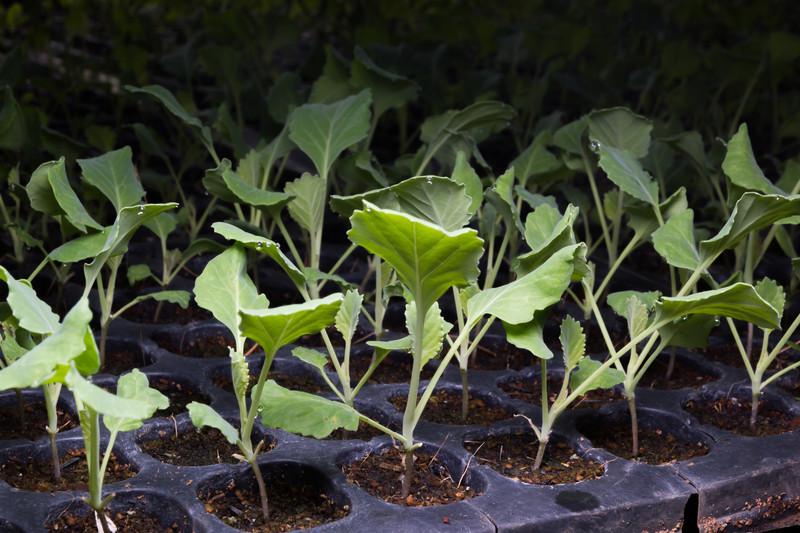
Crops best started from seed indoors
Some crops do poorly in outdoor germination conditions–the soil or air temperature must be optimal for success. Started indoors these crops gain the strength necessary to do well in the garden.
Cool-weather members of this group need a head start indoors because they must reach maturity when the weather is cool, before spring turns warm. But the cold air and soil temperatures of late winter are too cold for them to begin growing. Start these crops indoors and set them in the garden to come to maturity before it gets hot.
- Broccoli
- Brussels sprouts
- Cabbage
- Cardoon
- Cauliflower
- Celeriac
- Celery
- Florence fennel
- Kale
Warm-weather members of this group generally take 100 or more days to reach harvest. Started from seed in the garden when the weather is finally warm enough (temperatures consistently in the 60s or above) they are likely to run out of growing season or hold space in the garden that could be used by quicker-maturing cool-weather crops earlier in the season. They are best transplanted into the garden when the soil and air temperatures are right. Started indoors these plants will be well developed when they go to the garden; you won’t have to thin these plants. These crops include:
- Cucumbers
- Eggplant
- Melons
- Peppers
- Squash
- Tomatoes
Good Products for Raised Bed Growing at Amazon:

Crops to start indoors or outdoors
Some crops start outdoors just as well as they will start indoors. They are not finicky. Cold climate gardeners–gardeners with short growing seasons–often add these crops to those started indoors. The indoor start allows these crops to go into the garden as soon as the soil is workable (with the exception of corn–which will prefer to wait until outdoor temperatures are consistently in the 60s or above).
- Chinese cabbage
- Chard
- Collards
- Sweet corn
- Endive
- Escarole
- Kale
- Kohlrabi
- Leeks
- Lettuce
- Mustard
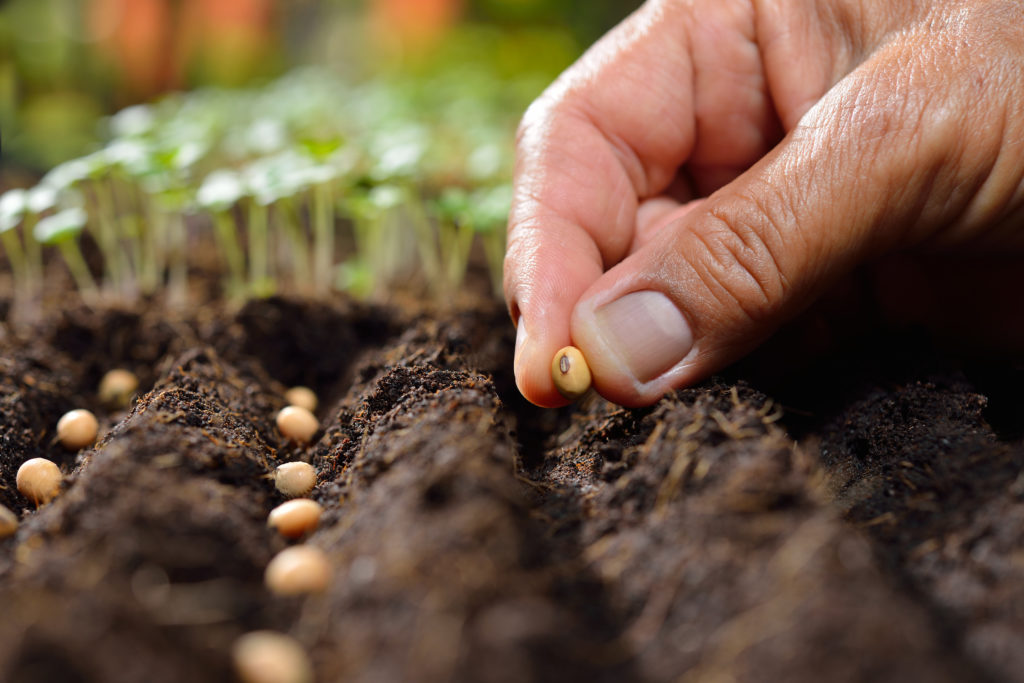
Crops to direct sow in the garden or biodegradable pots
Several warm-weather crops do not like being transplanted–their roots are too sensitive. These crops are best started directly from seed in the garden or in individual containers such as biodegradable peat pots or newspaper pots that can be set in the garden.
If you start these crops in plastic pots avoid bending or squeezing the root mass when you transplant them to the garden.
If you sow these crops directly in the garden, thin extra seedlings by cutting them off even at the soil level rather than lifting them and disturbing the roots of the seedlings nearby.
- Beans
- Cucumbers
- Muskmelons
- Okra
- Peas
- Pumpkins
- Squash
- Watermelon
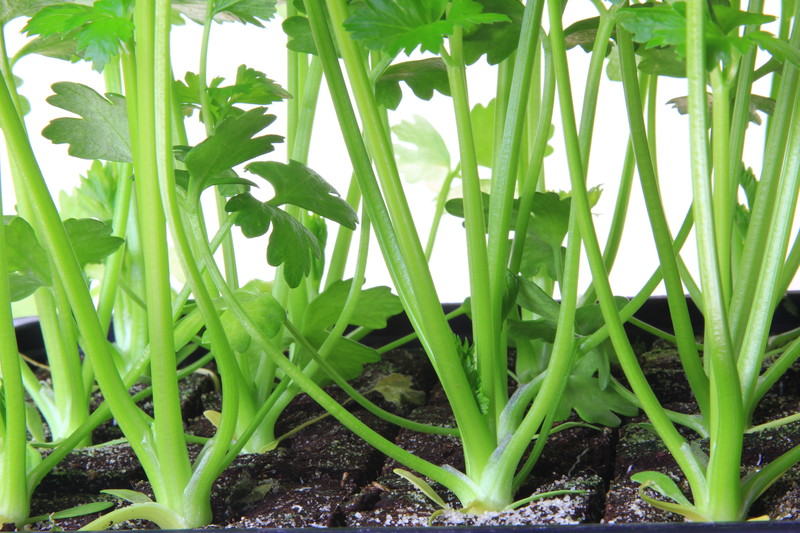
Crops easily started indoors
First-time seed starters should start with seeds that are easy to germinate and seedlings that can withstand transplanting. If you want to gain experience starting vegetables indoors and avoid first-timers’ frustration, start with any of these crops:
- Asparagus (dormant)
- Basil
- Broccoli
- Brussels sprouts
- Cabbage
- Chinese cabbage
- Cauliflower
- Celeriac
- Celery
- Chives
- Collards
- Eggplant
- Endive
- Escarole
- Garlic
- Kale
- Kohlrabi
- Leeks
- Lettuce
- Mustard
- Okra
- Onions
- Parsley
- Peppers
- Radicchio
- Rhubarb( dormant)
- Shallots
- Sunchokes (dormant)
- Tomatoes
- Tomatillos
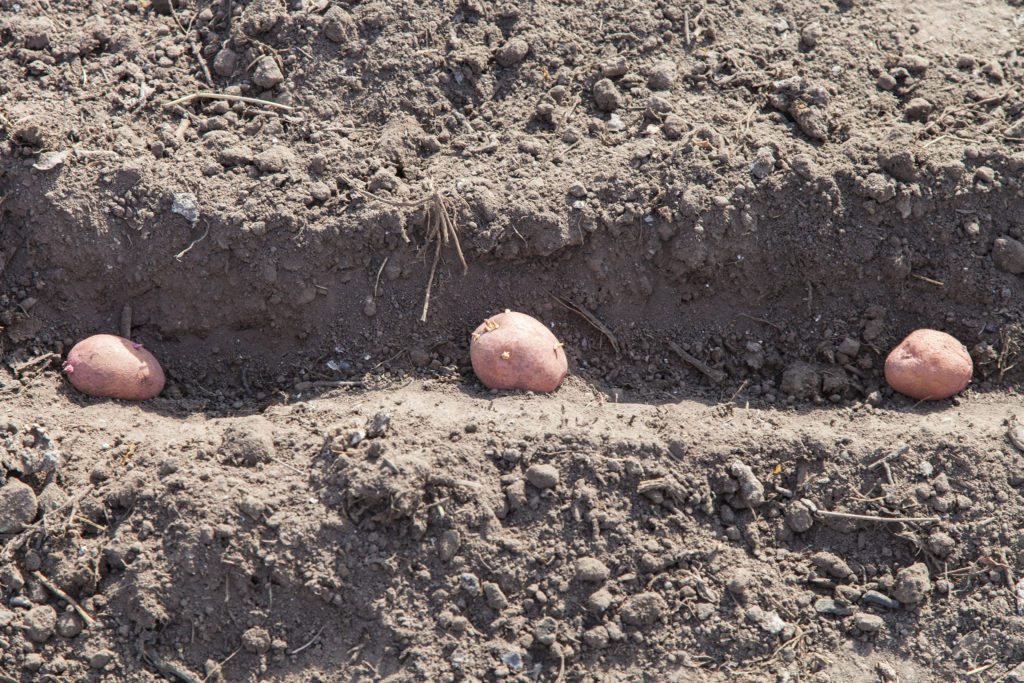
Crops not grown from seed
Not all vegetables are started from seed. Root divisions, cuttings, and cloves are used to get some vegetables started. Most of these crops are best started directly in the garden, but many can also be started indoors and transplanted out: artichokes: start from root divisions.
- Asparagus: start from 1-year-old roots.
- Garlic: start with cloves.
- Horseradish: start from root cuttings.
- Onions: start from sets, seeds, or small plants.
- Potatoes: start with “seed potatoes”–pieces of potato.
- Rhubarb: set out root crowns.
- Shallots: start with cloves.
- Sweet potatoes: start from slips transplants
Vegetable seed starting times
The seasons come and go at different times of the year depending upon where you live—Northern Hemisphere or Southern Hemisphere and the latitude within those regions.
Early spring might start in February in Southern California and early May in Maine. The closer you live to the equator the less winter temperatures will play a role in planting and harvesting—and crop selection.
In the mid-Northern Hemisphere, early winter arrives in December and late winter arrives in February; summer arrives in June and comes to a close in late August. In the mid-Southern Hemisphere, early summer arrives in December and late summer comes to an end in late February.
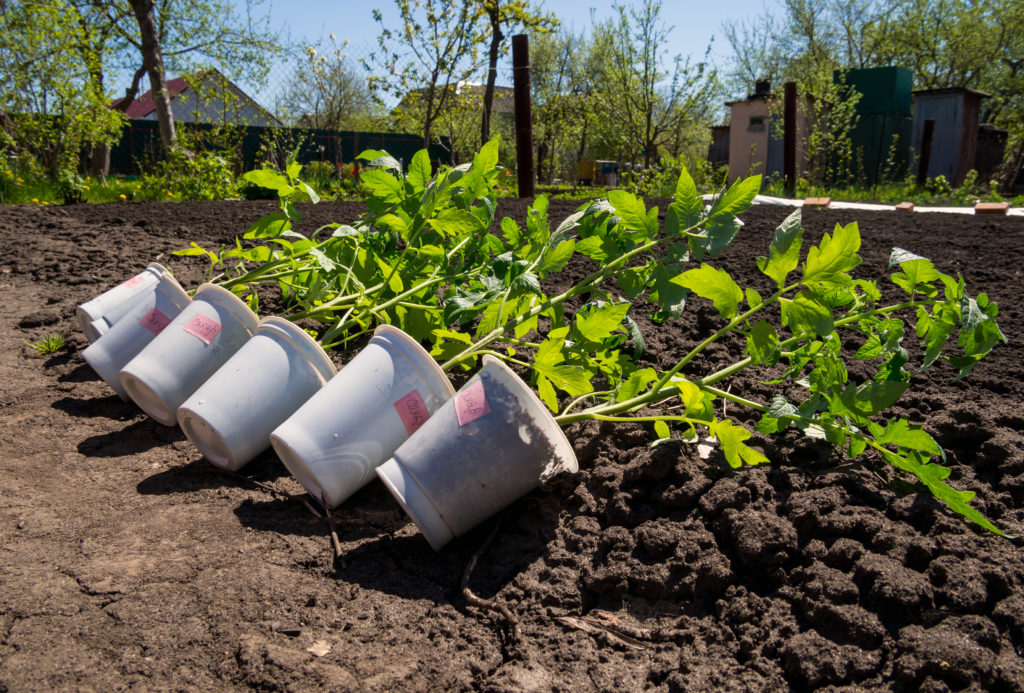
Good Products for Seed Starting Success at Amazon:
- Jump Start Germination Station w/Heat Mat Tray, 72-Cell Pack, Dome
- Espoma Seed Starting Mix
- 200 Count- Jiffy 7 Peat Soil Seed Starting Plugs
- Seed Starter Kit with Humidity Dome (120 Cells Total Tray)
- AgrobriteT5 Fluorescent, 2-Foot, Grow Light System
Think of each season–spring, summer, autumn, and winter–as lasting about 90 days; you can then divide each season into its early, mid-, and late periods. For example, early summer in New York State starts in early June and mid-summer starts in early July—early summer last about 30 days.
Tracking temperature averages and day length for a year or two where you live will help you localize your seasonal calendar.
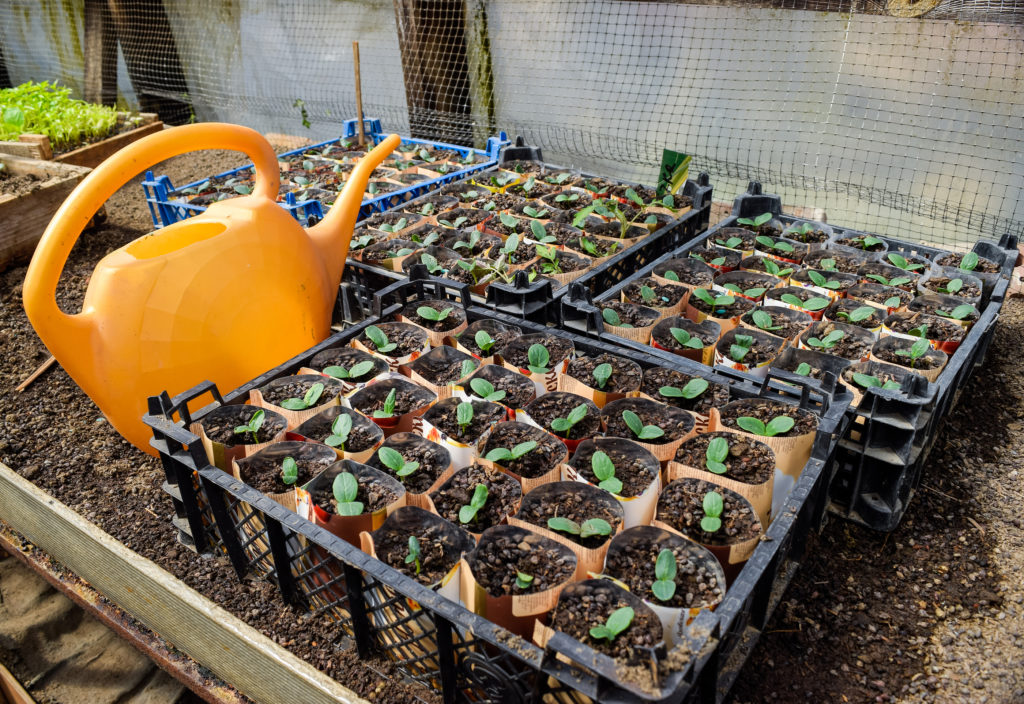
Seed sowing and harvest calendar
Here are the sowing and transplanting times for more than 40 vegetable crops. To get detailed seed starting and transplanting tips click on the crop name.
- Broad beans: Sow under cloches late winter; sow in the garden early spring; sow and transplant out in garden mid-spring and late spring; harvest early-, mid-, and late summer and early autumn; sow in garden mid and late winter.
- Snap beans: Sow under cloches mid-spring; sow in the garden late spring and early summer; harvest mid-and late summer and early autumn.
- Pole and runner beans: Sow indoors mid-spring; sow outdoors or transplant out in the garden late spring; sow in the garden early summer; harvest late summer and early and mid-autumn.
- Beets: Sow under cloches mid-spring; sow in the garden late spring and early summer; harvest mid-and late summer and early autumn.
- Broccoli: Sow in mid-spring and late spring; set out transplants in early or mid-summer; harvest in late winter and early and mid-spring.
- Brussels sprouts: Sow in early and mid-spring; set out transplants in late spring; harvest in late autumn and early, mid-, and late winter.
- Cabbage, autumn, and winter varieties: Sow late spring; set out transplants early- to mid-summer; harvest early, mid-, and late autumn and early, mid-, and late winter.
- Carrots: Sow early varieties in late winter; early and mid-varieties in early, mid-, and late spring and early summer; harvest in early, mid-, and late summer and early, mid-, and late autumn.
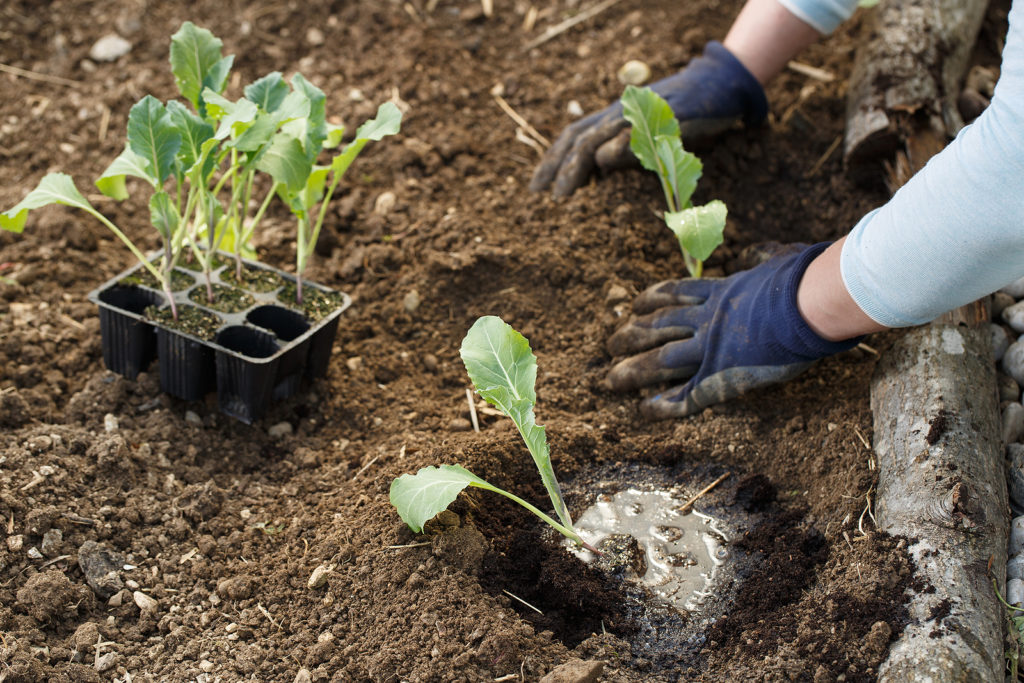
- Cauliflower: sow summer harvest varieties indoors mid-winter; transplant to garden summer harvest varieties early and mid-s spring; sow autumn harvest varieties mid- and late spring; set out autumn harvest transplants early summer; harvest mid-and late summer and early, mid-, and late autumn.
- Celery and Celeriac: Sow indoors late winter and early spring; thin seedlings late spring; transplant to garden early summer; harvest mid- and late autumn.
- Chicory: Sow forced varieties late spring; sow non-forced varieties early summer; harvest non-forced varieties mid-autumn; harvest forced varieties mid- and late winter.
- Chinese cabbage: Sow mid-, and late summer; set out transplants late summer; harvest late autumn and early, mid-, and late winter.
- Endive and escarole: Sow in early spring through late summer; harvest early autumn through late winter.
- Eggplant: Sow indoors early spring; thin seedlings mid-spring; transplant out in the garden early summer; harvest late summer and early autumn.
- Florence fennel: Sow mid- and late spring; harvest mid-and late summer and early autumn.
- Jerusalem artichoke: Plant late winter and early spring; harvest mid-autumn through late winter.
- Kale: Sow late spring; set out transplants mid-summer; harvest early, mid-, and late winter and early spring.
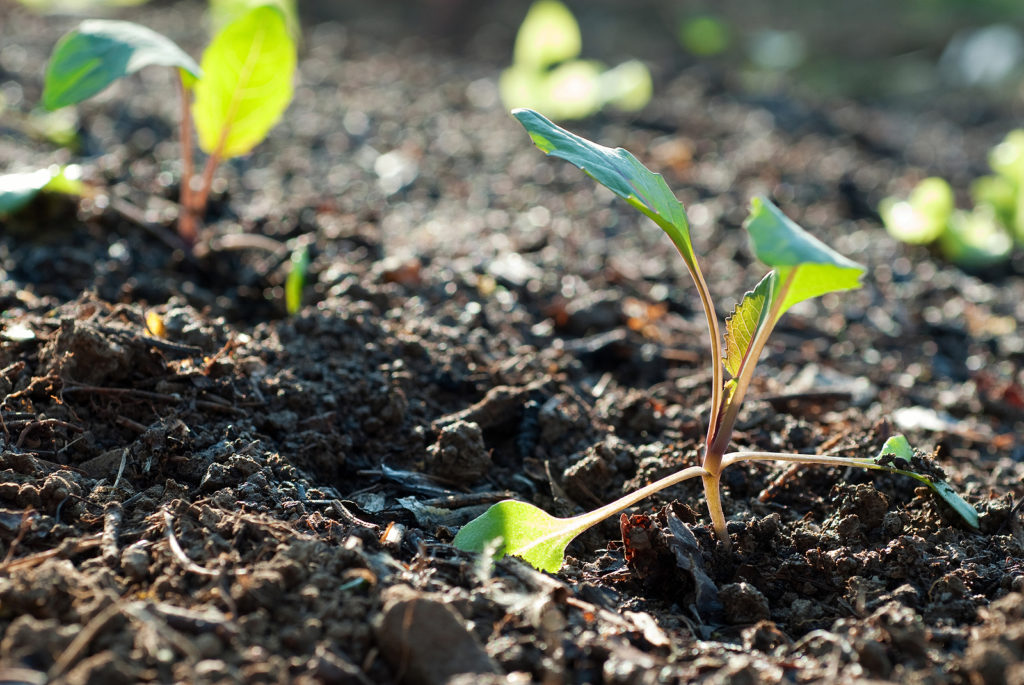
- Kohlrabi: Sow mid- and late spring and early and mid-summer; harvest late summer and early, mid-, and late autumn and early winter.
- Lettuce: Sow late winter and early, mid-, and late spring; harvest late spring and early, mid-, and late summer, and early autumn.
- Melons, summer and winter: Sow indoors mid- and late spring; transplant to garden early summer; harvest late summer and early autumn.
- Onions, bulbing: Plant sets late winter and early and mid-spring; harvest and store late summer and early autumn.
- Onions, green: Sow early and mid-spring; harvest mid-and late summer.
- Peas: Sow early, mid-, and late spring; harvest early, mid-, and late summer.
- Potatoes, early: Sow early and mid-spring; harvest mid-and late summer.
- Potatoes, maincrop: Sow mid-spring; harvest early to mid-autumn.
- Pepper, sweet: Sow indoors early spring; transplant into the garden early summer; harvest late summer and early autumn.
- Peppers chili: Sow indoors early spring; transplant into the garden early summer; harvest late summer and early autumn.
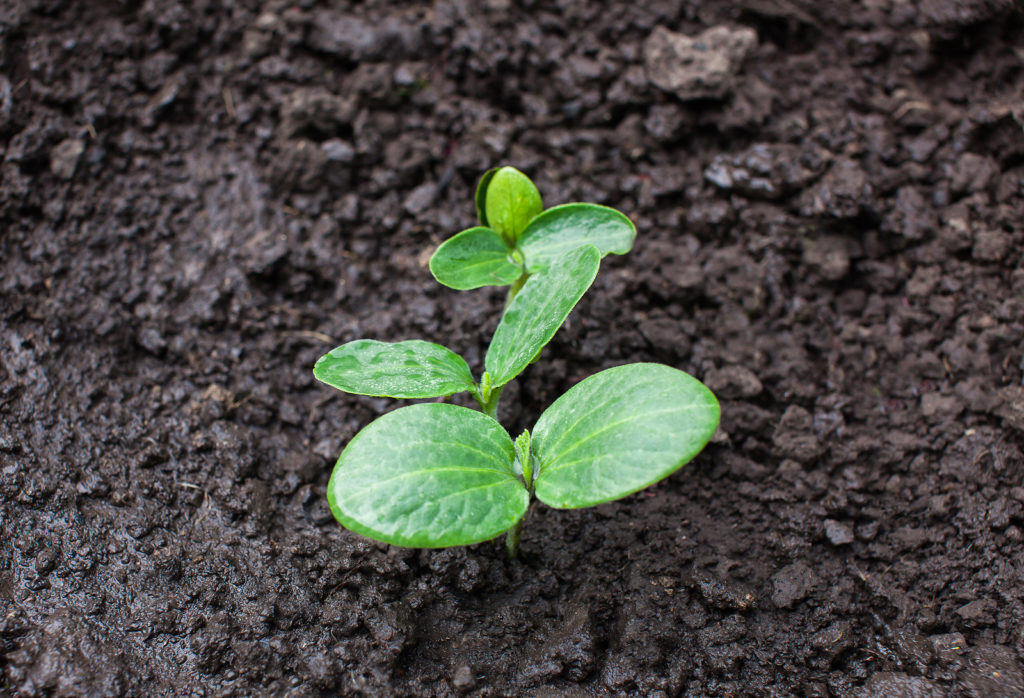
- Pumpkins: Sow indoors early spring; transplant into the garden early summer; harvest late summer and early to mid-autumn.
- Radicchio: Sow early spring; sow again in late summer; harvest in late spring and early summer and in autumn.
- Radishes: Sow under cloches late winter; sow in the garden early, mid-, and late spring and early summer; harvest late spring through early autumn.
- Shallots: Sow early and mid-spring; harvest mid-and late summer.
- Spinach: Sow early to late spring; harvest early summer to early autumn; sow again late summer and early autumn; harvest again late autumn through early spring.
- Squash, summer: Sow indoors mid- and late spring; transplant to garden early summer; harvest late summer and early autumn.
- Squash, winter: Sow indoors mid- and late spring; transplant to garden early summer; harvest early to late autumn.
- Swiss Chard: Sow in late spring and early summer; harvest all seasons from late summer to late spring.
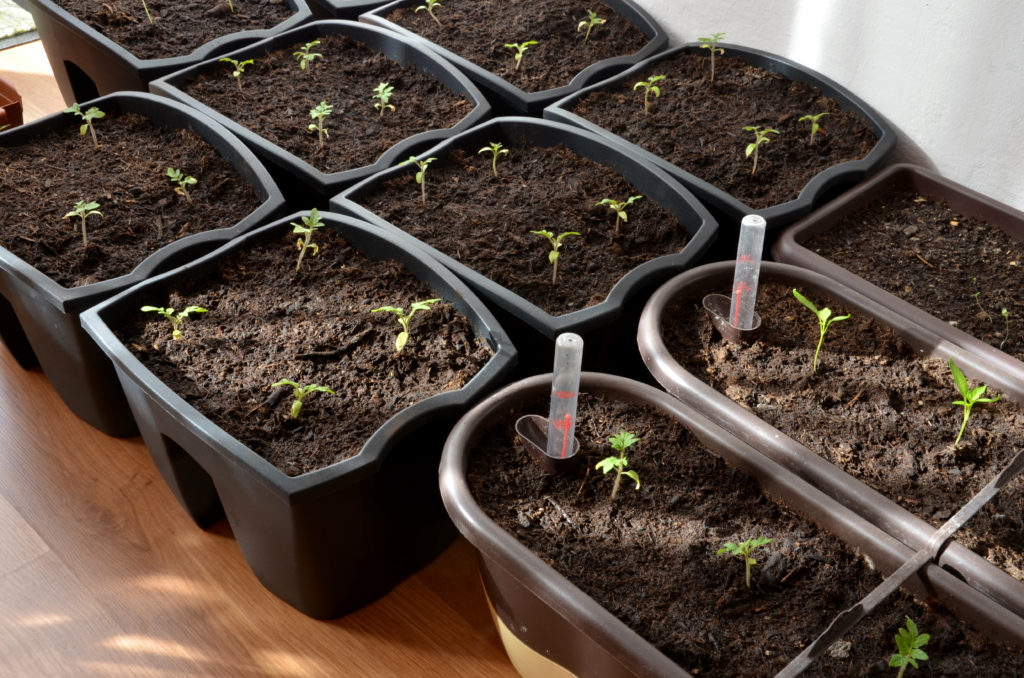
- Tomatoes: Sow indoors early and mid-spring; transplant into the garden late spring and early summer; harvest late summer and early autumn.
- Turnips: Sow mid- and late spring and early and mid-summer; harvest late summer and early, mid-, and late autumn and early winter.
- Watermelon: Sow indoors mid- and late spring; transplant to garden early summer; harvest late summer and early autumn.
- Zucchini (courgettes): Sow indoors mid- and late spring; transplant to garden early summer; harvest late summer and early autumn.
Late summer seed sowing
Seeds sown in warm soil and hot late summer weather can have a difficult time germinating. Moistening the seed bed and protecting the seed from hot weather can ensure germination.
Here are some simple steps to increase seed sowing success: (1) moisten the seed bed with a sprinkle of water; (2) sow seed; (3) cover the seed with a light soil mix; (4) again moisten the soil mix cover with a sprinkle of water; (5) press the soil cover lightly with a flat board to ensure the seed comes in full contact with the moist soil—above and below (soil contact and moisture ensure the seed shell breaks down and germinates).
A light mulch or covering of grass clippings, straw, burlap, or damp newspaper placed over the seed bed will help ensure the soil stays moist until germination, particularly during hot, dry weather.
Check beneath the mulch or covering each day then remove the mulch or covering the day seedlings begin to show above the soil. Continue to keep the soil just moist until new plants are well rooted and not dependent upon surface moisture–this may take a week or two if the weather is hot.
To slow soil moisture evaporation and protect young seedlings from hot days you may want to place stakes at the corners of the planting bed and drape shade cloth over the stakes.
The alternative to starting seed in seed beds–outdoor planting beds–is to start seed indoors. Indoor-started seedlings can be planted out into the garden after the heat eases. It may be much easier to keep your seed starting medium evenly moist indoors than out in hot weather.
Make a seed calendar
Establishing a seed planting calendar is one of the oldest and wisest gardening maxims. The success of many vegetable and flower sowings is getting the seed started at the right time of the year for germination, growth, and harvesting.
Mark on your garden calendar when seeds should be sown and when you actually sow them. Then you can arrange the seed packets in your seed drawer according to planting time.

Good Products for Seed Starting Success at Amazon:
- Jump Start Germination Station w/Heat Mat Tray, 72-Cell Pack, Dome
- Espoma Seed Starting Mix
- 200 Count- Jiffy 7 Peat Soil Seed Starting Plugs
- Seed Starter Kit with Humidity Dome (120 Cells Total Tray)
- AgrobriteT5 Fluorescent, 2-Foot, Grow Light System
Check your seed packets. The packet will tell you what month to sow and how long the plant will take to mature or reach harvest. (If you are new to gardening, there are plants that grow best in the warm time of the year and others that grow best in the cool time of the year.) See Planting Cool Season Crops and Know Your Warm Season Crops.
Once seeds are sown, mark the calendar again; this will tell you when the harvest is coming. You can then plan succession plantings and harvests as well. Quickly you will have your season mapped out and you will know when to sow pumpkin seeds for pie.)
Testing seed viability
You can test old seeds—from last year or years past—to determine if they are still viable. See Seed Viability
Count out ten seeds and place them on a double thickness of a moistened paper towel. Roll up the towel and place it in a plastic bag and seal it. Put the bag in a warm—about 70° to 80°F—and well-lit spot. In six to ten days open the bag to see how many seeds have sprouted. If 5 seeds have sprouted you have 50 percent germination. See Seed Germination Requirements.
Most new packets of seed have a 90 percent or better germination rate. You can count on almost every seed to sprout.
But if you have old seeds and the germination rate is just 50 percent, you will want to plant twice as many seeds to make up for the reduced rate of germination.
More tips at:
How to Thin Vegetable Seedlings
Garden Planning Books at Amazon:
- Vegetable Garden Grower’s Guide
- Tomato Grower’s Answer Book
- Vegetable Garden Almanac & Planner
- Kitchen Garden Grower’s Guide Vegetable Encyclopedia















